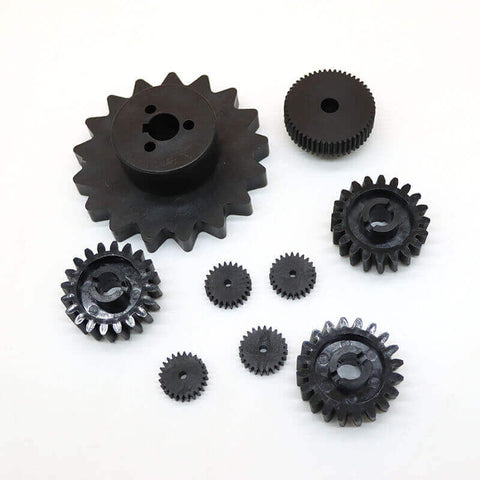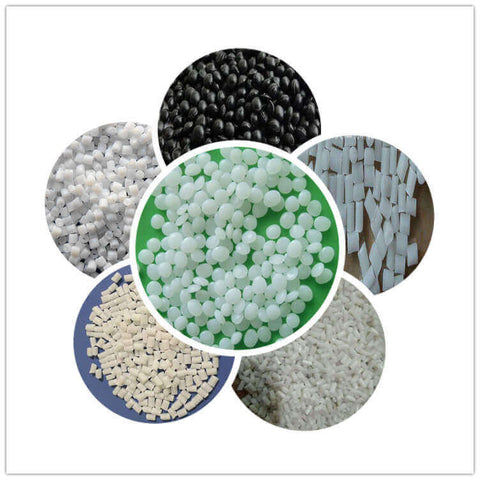Have you ever heard of polyoxymethylene (POM)? It’s a type of plastic that is used for making all kinds of things, like car parts, gears, screws, buttons, and even artificial joints. POM is awesome because it is very strong, stiff, resistant to wear and tear, and keeps its shape even at high temperatures. But POM is not perfect. It has some problems, like it can break down easily when it gets too hot, releasing a nasty gas called formaldehyde. It also doesn’t stick well with other materials, and it doesn’t interact well with living tissues. So how can we make POM better? How can we improve its properties and performance by adding or mixing other stuff to it?
🎉🎉🎉Limited Time Offer Use code: QR4GNY08SHVR at checkout and enjoy a special discount on your entire order! 👉 POM plastic
In this blog post, we will explore some of the cool experiments and tips on how to make POM better by adding or mixing other stuff to it. We will focus on three aspects: how to make POM more stable at high temperatures, how to make POM stronger and more durable, and how to make POM tougher and more resistant to heat. We will also talk about the pros and cons of each method, and give you some ideas on where you can use them or what you can do next.

How to Make POM More Stable at High Temperatures by Adding PEG-Functionalized Hydroxyapatite
One of the biggest challenges of using POM is that it can break down easily when it gets too hot, releasing formaldehyde gas. Formaldehyde gas is bad for your health and the environment. It can also make POM weaker and less useful. So how can we prevent POM from breaking down and releasing formaldehyde gas when it gets too hot?
A group of researchers from Poland came up with a clever solution: they added tiny particles of hydroxyapatite (HA) that were coated with poly (ethylene glycol) (PEG) to POM. HA is a material that is found in your bones and teeth. It is very compatible and friendly with living tissues. PEG is a material that can dissolve in water and make things more slippery and smooth. It can also help HA mix well with POM.
The researchers found that adding HA- g -PEG particles to POM can make POM more stable at high temperatures. The HA- g -PEG particles act like seeds for POM crystals to grow around them, making POM more solid and stable. The HA- g -PEG particles also act like shields for POM molecules, protecting them from breaking down and releasing formaldehyde gas.
The good thing about this method is that it can make POM more stable at high temperatures without making it weaker or less useful. It can also make POM more friendly with living tissues, which is great for medical applications. The bad thing about this method is that it requires a complicated process to make HA- g -PEG particles, and it can make POM products more expensive and heavier. Some possible uses of this method are for making artificial joints, implants, or dental materials that need to be stable at high temperatures and friendly with living tissues.

How to Make POM Stronger and More Durable by Adding Polyoxymethylene Fiber
Another challenge of using POM is that it doesn’t stick well with other materials, like metals or ceramics. This makes it hard to use POM in composite materials that need to be strong and durable. Composite materials are materials that are made by combining two or more different materials together. For example, concrete is a composite material that is made by combining cement, sand, water, and sometimes other stuff.
A group of researchers from China came up with a smart solution: they added polyoxymethylene fiber (POMF) to cement mortar. Cement mortar is a common material that is used for building structures or walls. It is made by mixing cement, sand, water, and sometimes other stuff. POMF is a short fiber that is made from POM. It has high tensile strength and stiffness.
The researchers found that adding POMF to cement mortar can make cement mortar stronger and more durable. The POMF acts like reinforcement for cement mortar, increasing its elasticity, compression resistance, and tension resistance. The POMF also acts like crack stopper for cement mortar, preventing it from cracking or breaking under stress.
The good thing about this method is that it can make cement mortar stronger and more durable without affecting its workability or setting time. It can also make cement mortar more flexible and crack resistant, which is great for building applications. The bad thing about this method is that it can make cement mortar absorb more water and shrink more, which can cause problems in some situations. It can also make cement mortar look less appealing, which can be an issue for some people. Some possible uses of this method are for making civil engineering structures or buildings that need to be strong and durable.

How to Make POM Tougher and More Resistant to Heat by Mixing It with Poly(lactic acid)
A third challenge of using POM is that it has low toughness and heat resistance. POM has a high glass transition temperature (Tg) and melting temperature ™, which means it can withstand high temperatures without losing its shape or properties. But this also means that POM has low impact resistance and fracture toughness, which means it can break easily under sudden or repeated stress. So how can we make POM tougher and more resistant to heat?
A group of researchers from Poland came up with a brilliant solution: they mixed polyoxymethylene (POM) with poly(lactic acid) (PLA). PLA is a material that is made from corn or sugar cane. It is biodegradable and biocompatible, which means it can decompose naturally and be friendly with living tissues. PLA has a lower Tg and Tm than POM, which means it can soften or melt at lower temperatures.
The researchers found that mixing POM with PLA can make POM tougher and more resistant to heat. The PLA acts like a softener for POM, lowering its Tg and Tm, and increasing its impact resistance and fracture toughness. The POM acts like a hardener for PLA, increasing its Tg and Tm, and preventing it from degrading or melting.
The good thing about this method is that it can make POM tougher and more resistant to heat without making it less stiff or resistant to wear and tear. It can also make POM more biodegradable and biocompatible, which is great for environmental or medical applications. The bad thing about this method is that it can make POM less solid and stable, which can cause problems in some situations. It can also affect the biodegradability and biocompatibility of PLA, which can be an issue for some people. Some possible uses of this method are for making automotive or electronic components that need to be tough and resistant to heat.

In this blog post, we have explored some of the cool experiments and tips on how to make POM better by adding or mixing other stuff to it. We have focused on three aspects: how to make POM more stable at high temperatures, how to make POM stronger and more durable, and how to make POM tougher and more resistant to heat. We have also talked about the pros and cons of each method, and given you some ideas on where you can use them or what you can do next.
POM is a awesome type of plastic that is used for making all kinds of things. But POM is not perfect. It has some problems, like it can break down easily when it gets too hot, releasing formaldehyde gas. It also doesn’t stick well with other materials, and it doesn’t interact well with living tissues. So how can we make POM better? How can we improve its properties and performance by adding or mixing other stuff to it?
We hope this blog post has been fun and helpful for you. If you want to learn more about POM or other types of plastics, you can check out some of the sources below or visit our website for more resources. Thank you for reading!
If you are interested in using POM sheet to use in your project or want to know more information, welcome to harass us. We are a professional supplier specializing in custom processing and production of various plastics, with a team of professional engineers and precision equipment we are happy to be bothered and help you meet your needs. Do you need a free quote or help with any questions or materials?
Our website: www.beeplastic.com
Click to contact: Customized POM Sheet/Bar
🎉🎉🎉Limited Time Offer Use code: QR4GNY08SHVR at checkout and enjoy a special discount on your entire order! 👉 POM plastic







